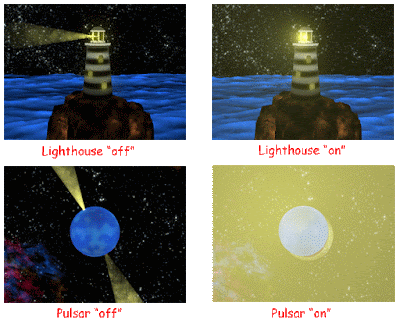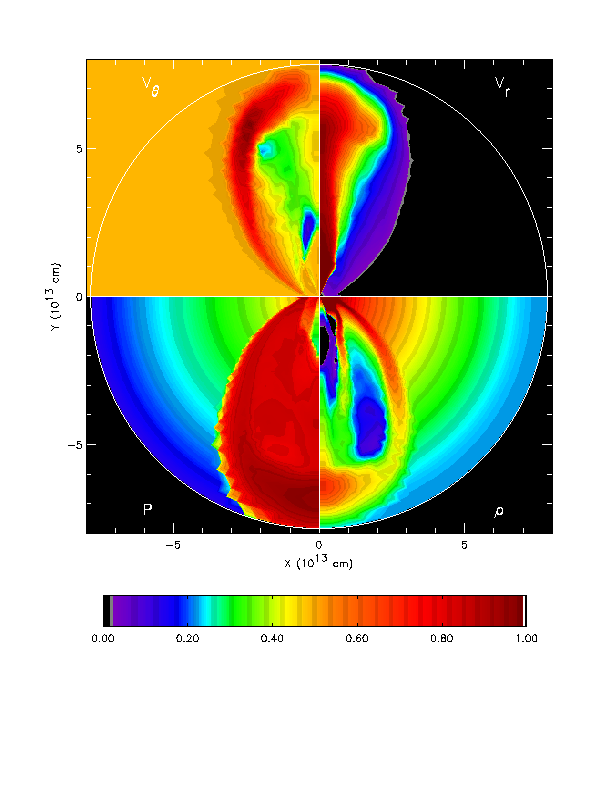 What Did I mean By Olympics?
What Did I mean By Olympics?It is not always easy for people to see what lies behind the wonderful beauty of images that we take from the satellite measures of space, and it's dynamical events illustrated in Cassiopeia A. There before you is this majestic image of beauty, as we wonder about it's dynamics.

These Spitzer Space Telescope images, taken one year apart, show the supernova remnant Cassiopeia A (yellow ball) and surrounding clouds of dust (reddish orange). The pictures illustrate that a blast of light from Cassiopeia A is waltzing outward through the dusty skies. This dance, called an "infrared echo," began when the remnant erupted about 50 years ago. Image credit: NASA/JPL-Caltech/Univ. of Ariz.
An enormous light echo etched in the sky by a fitful dead star was spotted by the infrared eyes of NASA's Spitzer Space Telescope.
The surprising finding indicates Cassiopeia A, the remnant of a star that died in a supernova explosion 325 years ago, is not resting peacefully. Instead, this dead star likely shot out at least one burst of energy as recently as 50 years ago.
How is it such information arrives to us, and we would have to consider the impulse's behind such geometrical explanations. Which we are lucky to see in other ways. So, of course we needed to see the impulse as dynamically driven by the geometrical inclinations of that collapse, and all it's information spread outward by the description in images painted.

Credit: Weiqun Zhang and Stan Woosley
This image is from a computer simulation of the beginning of a gamma-ray burst. Here we see the jet 9 seconds after its creation at the center of a Wolf Rayet star by the newly formed, accreting black hole within. The jet is now just erupting through the surface of the Wolf Rayet star, which has a radius comparable to that of the sun. Blue represents regions of low mass concentration, red is denser, and yellow denser still. Note the blue and red striations behind the head of the jet. These are bounded by internal shocks.
If I had approached you early on and suggested that you look at "bubble geometrodynamics" would it have seemed so real that I would have presented a experiment to you, that would help "by analogies" to see what is happening? Might I then be called the one spreading such information that it was not of value to scientists to consider, that I was seeing in ways that I can only now give to you as example? What science has done so far with using the physics with cosmological views?

Image Credit: NASA/JPL-Caltech/STScI/CXC/SAO
This stunning false-color picture shows off the many sides of the supernova remnant Cassiopeia A, which is made up of images taken by three of NASA's Great Observatories, using three different wavebands of light. Infrared data from the Spitzer Space Telescope are colored red; visible data from the Hubble Space Telescope are yellow; and X-ray data from the Chandra X-ray Observatory are green and blue.
Located 10,000 light-years away in the northern constellation Cassiopeia, Cassiopeia A is the remnant of a once massive star that died in a violent supernova explosion 325 years ago. It consists of a dead star, called a neutron star, and a surrounding shell of material that was blasted off as the star died. The neutron star can be seen in the Chandra data as a sharp turquoise dot in the center of the shimmering shell.
In this image above we learn of what manifests in "jet production lines," and such examples are beautiful examples to me of what the geometrics are doing. You needed some way to be able to explain this within context of the universe's incidences "as events." We say this action is one with which we may speak to this "corner of the universe." Yet it is very dynamical in it's expression as we see it multiplied from various perspectives.

The structure of Model J32 as the jet nears the surface 7820 seconds after core collapse.
So by experiment(?) I saw such relations, but what use such analogies if they are laid waste to speculation that what was initiated such ideas had been the inclination of geometrics detailed as underlying the basis of all expression as an example of some non euclidean views of Riemann perspectives leading shapes and dynamics of our universe by comparison within the local actions of stars and galaxies?
Gamma Rays?

So we get this information in one way or another and it was from such geometrical impulse that such examples are spread throughout the universe in ways that were not understood to well.

X-ray image of the gamma-ray burst GRB 060614 taken by the XRT instrument on Swift. The burst glowed in X-ray light for more than a week following the gamma-ray burst. This so-called "afterglow" gave an accurate position of the burst on the sky and enabled the deep optical observations made by ground-based observatories and the Hubble Space Telescope. Credit: NASA/Swift Team
A year ago scientists thought they had figured out the nature of gamma-ray bursts. They signal the birth of black holes and traditionally, fall into one of two categories: long or short. A newly discovered hybrid burst has properties of both known classes of gamma-ray bursts yet possesses features that remain unexplained.
The long bursts are those that last more than two seconds. It is believed that they are ejected by massive stars at the furthest edge of the universe as they collapse to form black holes.
So looking back to this timeline it is important to locate the ideas spread out before us. Have "some place" inclusive in the reality of that distance from the origins of the stars of our earliest times. 13.7 billions years imagine!

Fig. 1: Sketchy supernova classification scheme
A supernova is the most luminous event known. Its luminosity matches those of whole galaxies. The name derives from the works of Walter Baade and Fritz Zwicky who studied supernovae intensively in the early 1930s and used the term supernova therein.
Nowadays supernova is a collective term for different classes of objects, that exhibit a sudden rise in luminosity that drops again on a timescale of weeks.
Those objects are subdivided into two classes, supernovae of type I or II (SNe I and SNe II). The distinguishing feature is the absence or the presence of spectral lines of hydrogen. SNe I show no such lines as SNe II do. The class of SNe I is further subdivided in the classes a, b and c. This time the distinguishing feature are spectral features of helium and silicon. SN Ia show silicon features, SN Ib show helium but no silicon features and SN Ic show both no silicon and no helium spectral features.
The class of SN II is further subdivided in two classes. Those are distinguished by the decline of the lightcurve. Those SN II that show a linear decline are named SN II-L and those that pass through a plateau-phase are referred to as SN II-P.
So given the standard information one would have to postulate something different then what is currently classified?
A new Type III (what ever one shall attribute this to definition, versus Type I, Type IIa?

ssc2006-22b: Brief History of the Universe
Credit: NASA/JPL-Caltech/A. Kashlinsky (GSFC)
This artist's timeline chronicles the history of the universe, from its explosive beginning to its mature, present-day state.
Our universe began in a tremendous explosion known as the Big Bang about 13.7 billion years ago (left side of strip). Observations by NASA's Cosmic Background Explorer and Wilkinson Anisotropy Microwave Probe revealed microwave light from this very early epoch, about 400,000 years after the Big Bang, providing strong evidence that our universe did blast into existence. Results from the Cosmic Background Explorer were honored with the 2006 Nobel Prize for Physics.
A period of darkness ensued, until about a few hundred million years later, when the first objects flooded the universe with light. This first light is believed to have been captured in data from NASA's Spitzer Space Telescope. The light detected by Spitzer would have originated as visible and ultraviolet light, then stretched, or redshifted, to lower-energy infrared wavelengths during its long voyage to reach us across expanding space. The light detected by the Cosmic Background Explorer and the Wilkinson Anisotropy Microwave Probe from our very young universe traveled farther to reach us, and stretched to even lower-energy microwave wavelengths.
Astronomers do not know if the very first objects were either stars or quasars. The first stars, called Population III stars (our star is a Population I star), were much bigger and brighter than any in our nearby universe, with masses about 1,000 times that of our sun. These stars first grouped together into mini-galaxies. By about a few billion years after the Big Bang, the mini-galaxies had merged to form mature galaxies, including spiral galaxies like our own Milky Way. The first quasars ultimately became the centers of powerful galaxies that are more common in the distant universe.
NASA's Hubble Space Telescope has captured stunning pictures of earlier galaxies, as far back as ten billion light-years away.
Would sort of set up the challenge?







No comments:
Post a Comment